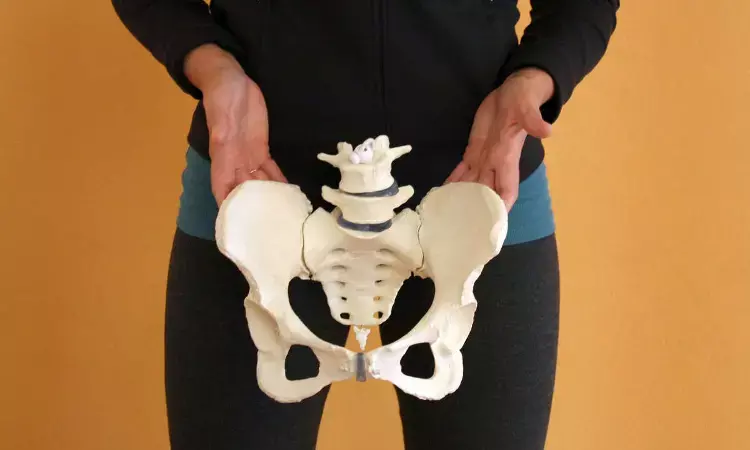- Home
- Medical news & Guidelines
- Anesthesiology
- Cardiology and CTVS
- Critical Care
- Dentistry
- Dermatology
- Diabetes and Endocrinology
- ENT
- Gastroenterology
- Medicine
- Nephrology
- Neurology
- Obstretics-Gynaecology
- Oncology
- Ophthalmology
- Orthopaedics
- Pediatrics-Neonatology
- Psychiatry
- Pulmonology
- Radiology
- Surgery
- Urology
- Laboratory Medicine
- Diet
- Nursing
- Paramedical
- Physiotherapy
- Health news
- Fact Check
- Bone Health Fact Check
- Brain Health Fact Check
- Cancer Related Fact Check
- Child Care Fact Check
- Dental and oral health fact check
- Diabetes and metabolic health fact check
- Diet and Nutrition Fact Check
- Eye and ENT Care Fact Check
- Fitness fact check
- Gut health fact check
- Heart health fact check
- Kidney health fact check
- Medical education fact check
- Men's health fact check
- Respiratory fact check
- Skin and hair care fact check
- Vaccine and Immunization fact check
- Women's health fact check
- AYUSH
- State News
- Andaman and Nicobar Islands
- Andhra Pradesh
- Arunachal Pradesh
- Assam
- Bihar
- Chandigarh
- Chattisgarh
- Dadra and Nagar Haveli
- Daman and Diu
- Delhi
- Goa
- Gujarat
- Haryana
- Himachal Pradesh
- Jammu & Kashmir
- Jharkhand
- Karnataka
- Kerala
- Ladakh
- Lakshadweep
- Madhya Pradesh
- Maharashtra
- Manipur
- Meghalaya
- Mizoram
- Nagaland
- Odisha
- Puducherry
- Punjab
- Rajasthan
- Sikkim
- Tamil Nadu
- Telangana
- Tripura
- Uttar Pradesh
- Uttrakhand
- West Bengal
- Medical Education
- Industry
Pararectus approach better than modified stoppa approach for treating complex pelvic and acetabular fractures

Pelvic and acetabular fractures are common orthopedic diseases. Wei Liu et al conducted a study to investigate the therapeutic effects of pararectus and Stoppa approaches in treating complex pelvic acetabular fractures. The study has been published in Indian Journal of Orthopaedics.
The authors found that the pararectus approach can reveal the better anatomical structure of the pelvis and acetabulum, such as the corona mortis and quadrilateral plate, for conducive fracture reduction and fixation. It can also effectively shorten the length of the incision, reduce operative blood loss, and shorten the operation time. It is a better choice for the clinical treatment of complex pelvic and acetabular fractures.
The clinical information of patients with pelvic and acetabular fractures treated surgically in Luan Hospital of Chinese medicine, China for a period of 4 years was analyzed. There were 30 cases each in the transabdominal pararectus approach and modified Stoppa approach groups. The operation time, incision length, blood loss, and postoperative complications of both groups were recorded according to the Merle d'Aubigné-Postel hip score. The recovery of hip function was evaluated 6 months after surgery, and the clinical and therapeutic efficacies of the two groups were compared.
Key findings of the study were:
•The patients were followed up for 6–7 months (average, 6.5 months).
•The average operation time, incision length, and blood loss in the pararectus and Stoppa approach groups were 180±41.105 min, 8.667±1.373 cm, 259.667±382 mL and 202.667±32.793 min, 11.600±1.958 cm, and 353.667±590 mL, respectively.
•The satisfactory rate of fracture reduction, excellent and good rate of hip function score, and incidence of complications were 28/30, 27/30, 1/30 and 25/30, 25/30, 3/30, respectively.
•There were significant differences in operation time, incision length, and blood loss between the two groups (p<0.05).
•There was no significant difference in the excellent and good rate of hip function score, fracture reduction satisfaction, and complication rate between both groups (p>0.05).
The authors commented that – "the results showed that the operation time, incision length, and blood loss of the pararectus approach group were significantly better than those of the modified Stoppa approach. Besides, the pararectus approach can reveal the better anatomical structure of the pelvis and acetabulum, such as the corona mortis and quadrilateral plate, for conducive fracture reduction and fixation. So all these results furtherly confirmed the important application values of the pararectus approach in the surgical treatment of complex pelvic acetabular fractures. It is expected that this approach will be more widely used in the clinical treatment of pelvic and acetabular fractures in the future."
For steps of pararectus approach and details please refer to:
Comparison of Therapeutic Outcomes of Transabdominal Pararectus Approach and Modifed Stoppa Approach in Treating Pelvic and Acetabular Fractures Wei Liu, Hongbin Yang et al Indian Journal of Orthopaedics (2022) 56:829–836 https://doi.org/10.1007/s43465-021-00585-1
MBBS, Dip. Ortho, DNB ortho, MNAMS
Dr Supreeth D R (MBBS, Dip. Ortho, DNB ortho, MNAMS) is a practicing orthopedician with interest in medical research and publishing articles. He completed MBBS from mysore medical college, dip ortho from Trivandrum medical college and sec. DNB from Manipal Hospital, Bengaluru. He has expirence of 7years in the field of orthopedics. He has presented scientific papers & posters in various state, national and international conferences. His interest in writing articles lead the way to join medical dialogues. He can be contacted at editorial@medicaldialogues.in.
Dr Kamal Kant Kohli-MBBS, DTCD- a chest specialist with more than 30 years of practice and a flair for writing clinical articles, Dr Kamal Kant Kohli joined Medical Dialogues as a Chief Editor of Medical News. Besides writing articles, as an editor, he proofreads and verifies all the medical content published on Medical Dialogues including those coming from journals, studies,medical conferences,guidelines etc. Email: drkohli@medicaldialogues.in. Contact no. 011-43720751


